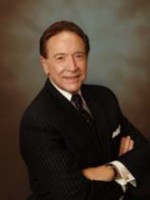Home Guru: Does Your Street’s Name Influence Your Home’s Appeal?

Besides serving as a way to find where you live, can the name of your street influence the perception of your home and its value?
The thought occurred to me once when I read a newspaper report about a complaint among residents of a town in Putnam County where a local motel housed sex offenders. At the end of the article, almost as a throwaway, the motel’s street address was listed as Sodom Road.
You just can’t make this stuff up.
The origins of street names can be a fascinating study, ranging from history, their locations, mystery or sheer whimsy.
I was first aware of how streets got their names when I went to elementary school in Philadelphia and the nuns taught us that the etymology of street names there were based on the plan developed by William Penn, where the major east-west streets were the names of trees: Vine, Mulberry, Chestnut, Walnut, Locust, Spruce and Pine among them, intersected by a numbered grid.
And when we took a class trip to Washington, D.C., I found that all 50 states have streets named after them, most of them cross diagonally through an alphabetic and numbered grid system. Rather than making an address clear, the intention of that system was to confuse invaders and to guard the Capitol, but today it serves to confuse tourists as well.
When I moved to New York City, I was relieved to find a grid plan that made finding any address very easy, except for the wildly erratic system in Greenwich Village, which was established before the grid system was in place. Somehow West 4th Street manages to intersect West 12th Street.
Until the mid 1800s, most of the population lived in densely populated cities where grid systems avoided chaos. But around 1850, people began moving out of congested cities to have cleaner air and more space. With increased value placed on nature, it became common to name streets after trees. As a result, my immediate neighborhood features Hickory, Hemlock and Birch Streets.
Roads in our communities might also reveal the types of industries they originally supported, such as Mill Street, Milk Street, Farmers’ Market, Commerce Street and Mechanics Road. Also, presidents have been honored: Washington, Jefferson, Lincoln, Madison and Kennedy Boulevards abound across the nation. And some streets simply reflect what they face, such as Mountain View, Lakeside and Hudson View.
But the most creative names came with modern housing track developments where builders became responsible for naming streets, harnessing the suggestive power of words that shape a neighborhood even before the first home is built.
Sometimes the personal interests of builders attached themselves to street names. The most interesting I’ve found is a neighborhood in Mahopac known as the “fish bowl” where the streets are named Pike Place, Perch Drive and Trout Place. In the same town, my friends Jeanne and Gerry live in the “flower” neighborhood of Astor, Dahlia and Tulip. Nearby in Yorktown, we become American literary aficionados in Walden Woods with such names as Whitman, Emerson and Thoreau.
From the 1970s and 1980s, newer developments frequently adopted names of the developers’ wives or daughters, and infrequently, sons. Today, that practice is generally discouraged by town planning boards because those street signs tend to be stolen more frequently, presumably by young people with the same names.
We can be either drawn to or repelled by the mystery of some street names. I had a real estate client who challenged me to find a house for her on Watermelon Hill Road simply because she loved the name so much. My personal favorites in this region are Pudding Street, Bullet Hole Road and Lover’s Lane in Putnam Valley and Fiddler’s Bridge Road in Dutchess County. Where did those haunting names originate, I wonder?
As I travel our byways, I also ponder such questions as whether Gay Ridge conjures up the question of its residents’ orientation. And, does Church Street or Seminary Road lead the traveler to heaven?
And let’s not forget all the names that reflect our Native American roots, such as Wiccoppee and Taconic.
There’s no denying that, whether your street suggests picking a flower, enjoying the comfort of a shade tree, paying tribute to a founding father, making love or catching a fish, its name can indeed add character, charm or mystery to where you live.
Here’s a good trivia question for you. Can you guess the most popular street name in America? No, it’s not Main, Maple or Elm. It’s 2nd Street. Surprised? The reason is that most towns in America started with a simple grid of numbered streets, but many times 1st Street was renamed Main Street, boosting 2nd Street to the lead. So you might say that 2nd is second to none.
Bill Primavera is a Residential and Commercial Realtor® associated with Coldwell Banker, as well as a marketer and journalist who writes regularly as The Home Guru. For questions about home maintenance or to buy or sell a home, he can be emailed at Bill@TheHomeGuru.com or called directly at 914-522-2076.
